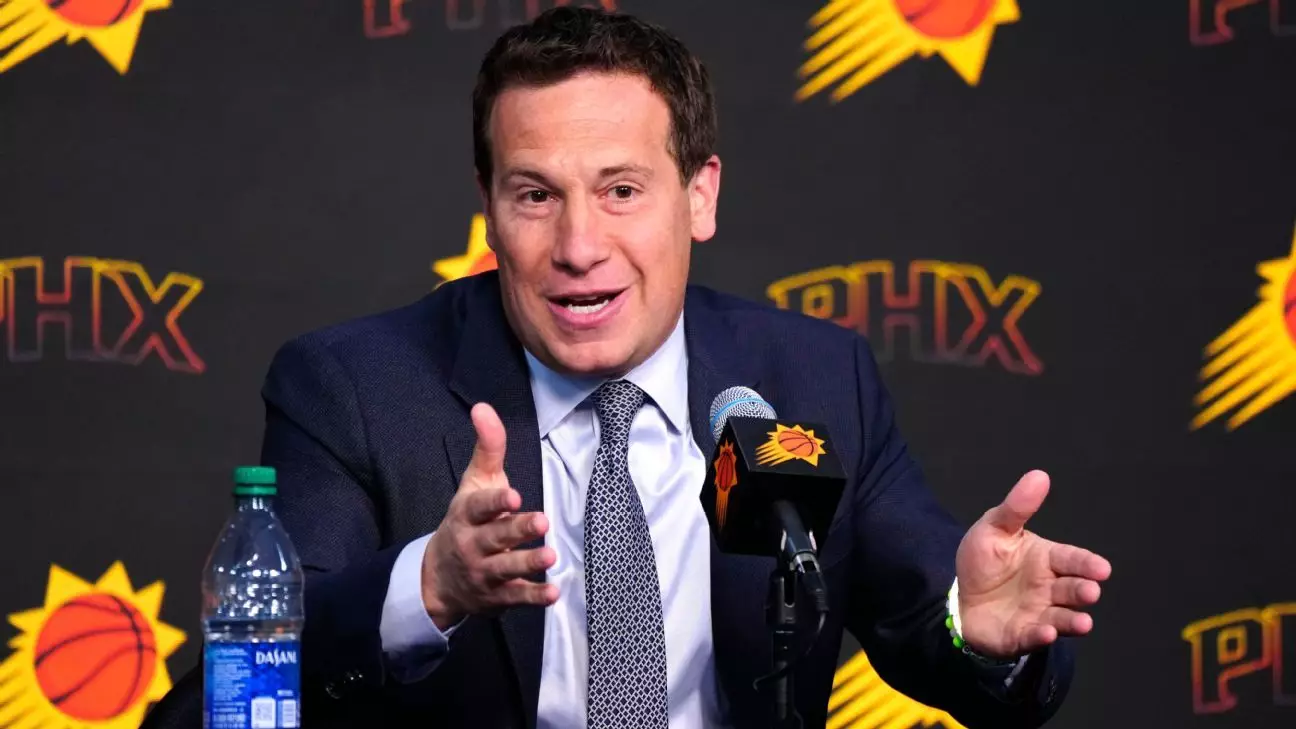In a landscape dominated by traditional regional sports networks (RSNs), the Phoenix Suns and Phoenix Mercury dared to veer off the beaten path, challenging industry norms with a daring overhaul of their broadcast strategy. Their decision to abandon a long-standing partnership with the bankrupt Diamond Sports and instead embrace over-the-air broadcasting marked a significant departure from the established model. This move didn’t just stem from a desire for innovation; it was driven by a strategic vision aimed at maximizing accessibility and fostering genuine fan engagement. The Suns and Mercury’s willingness to buck the system underscores a crucial insight: the future of sports media lies in prioritizing fans over traditional revenue streams. By broadcasting games free over the air, they are not just adapting to a changing industry—they are reshaping it.
This approach, initially met with skepticism, has proven to be a masterstroke. The success of their new media rights deal with Gray Media illustrates how a bold, fan-first strategy can translate into substantial financial gains. This shift seems to challenge the notion that lucrative broadcast deals can only be secured through costly, cable-based packages. Instead, the Suns and Mercury demonstrate that making games more accessible can galvanize a broader audience, creating an ecosystem where revenue is generated not solely through subscriptions but through increased viewership and engagement.
Rethinking Revenue: Beyond the Traditional Model
The financial landscape of the NBA is undergoing a seismic transformation, driven largely by the decline of regional sports networks due to cord-cutting and changing consumer habits. This upheaval has created a dilemma for teams: how to sustain revenues while adapting to a new digital era. The Suns and Mercury’s success offers a compelling rebuttal to the conventional wisdom that lucrative local TV deals are the only way to thrive. Their deal, valued at over $30 million annually, shows that there is tangible value in leveraging free over-the-air broadcasts, especially when fueled by surging local ratings.
In fact, the ratings boom provides a clear metric of success and a blueprint for other teams. The Mercury, in particular, saw its audience surge by an astonishing 425%, demonstrating how accessibility directly correlates with viewer engagement. Such growth not only benefits the franchises financially but also elevates the league’s overall appeal, attracting new fans who seek free, easy access to live sports. This paradigm shift could potentially cause a ripple effect across the league as other franchises scrutinize their own media partnerships and consider similar innovative approaches.
However, the broader implications are complex. The NBA’s national media rights deal, although lucrative at over $77 billion, is shadowed by the decreasing value of local rights. Several teams, including the New York Knicks, face substantial reductions in local TV revenue—an early sign of the economic strain caused by declining traditional TV audiences. These financial pressures make the Suns and Mercury’s strategy all the more relevant; they present an alternative model rooted in accessibility and fan engagement rather than reliance on declining regional deals.
Implications for the Future of NBA Broadcasting
The Suns and Mercury’s pioneering approach has broader implications for the league’s evolution. With 18 teams facing the expiration of their RSN contracts over the next two years, there is an unprecedented opportunity for radical change. The NBA appears poised to experiment with hybrid models that combine traditional broadcasting, over-the-air TV, and digital streaming platforms. The goal? To create a resilient ecosystem that can accommodate diverse consumer preferences and diminishing traditional revenue sources.
Owner Mat Ishbia’s openness about collaborating with other franchises and sharing the successful blueprint indicates a turning point. His confidence that this revised model can serve as a blueprint for the league suggests a future where accessibility and innovation are prioritized. Such transformation could democratize access to NBA games, bringing the league closer to its core fans and expanding its global reach.
This shift is not without risks. Moving away from guaranteed regional deals involves uncertainty, and some owners may remain hesitant to relinquish the predictable income stream from RSNs. Nonetheless, the Suns and Mercury’s early results challenge industry skeptics and show that bold experimentation rooted in fans’ needs can generate sustainable growth. As the league navigates this transition, the key question remains: can other teams follow suit and redefine the NBA’s media landscape? The answer will shape the league’s trajectory for decades to come.


Leave a Reply